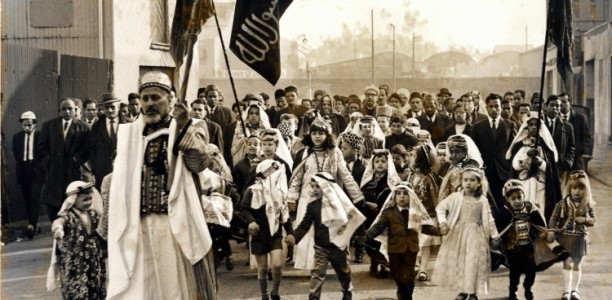
Recent Somali migration to the UK has been widely documented but much less is known about the ‘first wave’ of migrants in Britain. Due to the historical importance of Britain’s maritime trade, Somali seafarers have been have been living and working in the country since the mid 1800s. Young Somali men – as well as large numbers of Arabs (from the Yemen in particular) – worked from ports such as Cardiff, South Shields and Liverpool and many eventually settled down and raised families locally.
Aiming to document some of this history, I recently completed a project based at the Islam-UK Centre at Cardiff University, researching the history of Muslims in South Wales. Focussing on Yemeni and Somali seafarers, Dr Gilliat-Ray and I examined the photographic and documentary evidence from the Butetown History and Arts Centre.
We collaborated with the Somali Integration Society, based in Cardiff, working on the “Four Generations Project” (2009–2010), which added to the research base. Most significantly, we conducted indepth interviews with elders who have been living and working in the city for at least two generations. We chatted to the men about their experiences of living in South Wales, their work on the ships and their experiences of practicing Islam. We were lucky enough to interview Sheikh Said, one of the longest-serving Imams in the UK. Over the course of a year I spoke to Sheikh Saeed Ismail – a British Yemeni – several times about his important religious work in Cardiff and about the strong relationships within the Yemeni community in South Wales. Sadly Sheikh Saeed passed away in 2011, after five decades of serving his community.
https://www.clickonwales.org/2011/05/an-iconic-welsh-figure-in-the-history-of-islam/
Throughout the course of the research it became apparent that Somali and Yemeni communities enjoyed particularly close-knit bonds, a relationship that was based upon a shared religious and minority ethnic position. Another significant finding was the establishment of Islam within the communities, particularly in relation to the mosques and Maktabs (Islamic schools for children). There was a number of conversions among the local Welsh community, notably the women who became romantically attached to the seafarers.
Further information on the history of Somalis and Yemenis in Cardiff is documented by the Butetown History and Arts Centre
and at the National History Museum of Wales
https://www.museumwales.ac.uk/en/stfagans/
The publications from our research project are listed below:
Gilliat-Ray, S. and Mellor, J. (2010) ‘Bilad al-Welsh (Land of the Welsh): Muslims in Cardiff, South Wales – past, present, and future’, The Muslim World, 100 (4): 452-475
Gilliat-Ray, S (2010) ‘The First Registered Mosque in the UK, Cardiff, 1860’: the evolution of a myth. Contemporary Islam, 4 (2): 179-193
Mellor, J. and Gilliat-Ray, S. (forthcoming) ‘The early history of migration and settlement of Yemenis in Cardiff, 1939 to 1970: Religion and ethnicity as social capital’, Ethnic and Racial Studies.
No responses yet